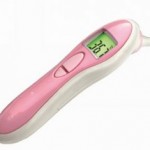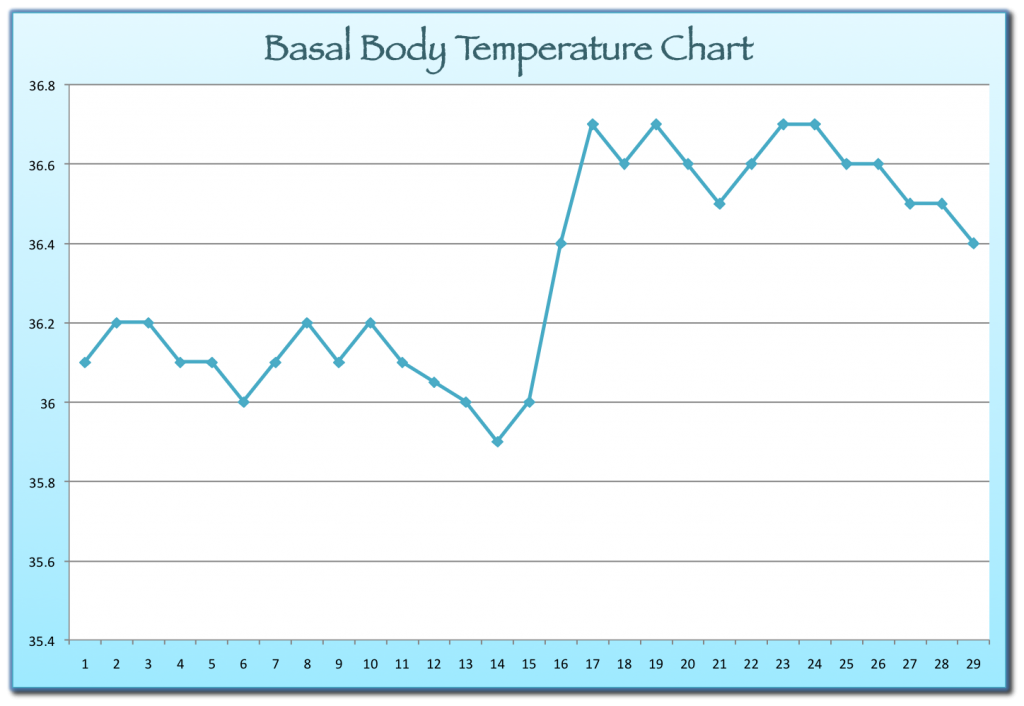
One way to optimize your fertility is to understand your fertility. And this starts with understanding your menstrual cycle and your optimal fertility window.
Basal body temperature tracking, often combined with cervical fluid testing, can be a simple but effective way to increase your chances of conceiving. By tracking your daily temperatures you can get a clear picture of when (and if!) you are ovulating, allowing for appropriately timed intercourse.
How to Test Your Basal Body Temperature (BBT)
For the purposes of tracking your hormone balance across your monthly cycle you should follow these simple instructions.
 Purchase a BBT thermometer. It is important that the thermometer go to two decimal places (36.00). These are usually found in the family planning section at your local drug store.
Purchase a BBT thermometer. It is important that the thermometer go to two decimal places (36.00). These are usually found in the family planning section at your local drug store.- Download a free app (Fertility Friend) that allows you to track your temperatures, or print out a tracking chart
- Place your thermometer on your bedside table, within reach
- Take your temperature IMMEDIATELY on rising every morning. It is important that you do not get out of bed first, do not kiss your partner, do not get up to pee. Your basal temperature is your temperature at rest, any movement can change the temperature.
- Note your temperature in your app or on your chart.
Ideally you need to be asleep for at least 3 hours prior to taking your basal body temperature.
Changes in your daily routine, such as sleeping late, stress, alcohol consumption, colds or fevers, can influence your temperature. Be sure to note any deviations from normal in your chart so that any anomalies in your chart can be explained.
Understanding Your BBT Chart
Your Naturopathic Doctor can help you to understand your chart, especially if it does not follow the expected pattern (shown here).
The first half of your cycle (from the first day of your period until you ovulate) should be relatively stable with a lower overall temperature than the second half. At ovulation a significant increase in temperature (usually 0.3-0.5oC) is seen. During the second half (the luteal phase) the temperature should remain high and stable. As your period begins the temperature drops again and a new BBT chart is started.
Why Track Your BBT
For most women the fertile window, the time in which there is a chance for fertilization and pregnancy to occur, is a short 3-4 days. To enhance your fertility you must ensure that intercourse occurs within this window. The BBT chart can help you learn when you are most fertile and allow you to plan accordingly.
The fertile window occurs in the 3-4 days prior to ovulation (which corresponds with an increase in basal body temperature). By tracking your BBT over several months you can start to see a pattern in your ovulation. When combined with cervical fluid testing BBT tracking can significantly improve your chances of pregnancy.
BBT tracking can also highlight imbalances in your hormones that could be negatively impacting your fertility. A lack of ovulation (anovulation), a shortened luteal phase (luteal phase defect), a prolonged menstrual cycle and more can all be identified by a skilled eye simply by looking at your BBT chart.
I recommend all women empower themselves with a greater knowledge of their bodies, and the BBT chart can be an excellent tool in connecting with, and understanding your body, your menstrual cycle and your fertility.
Disclaimer
The advice provided in this article is for informational purposes only. It is meant to augment and not replace consultation with a licensed health care provider. Consultation with a Naturopathic Doctor or other primary care provider is recommended for anyone suffering from a health problem.

















[…] used with basal body temperature testing, you will begin to recognize patterns of your fertile cycle and greatly improve your chances of […]
[…] articles on this website will teach you how to track your basal body temperature and cervical fluids, but this article will take you through the hormonal changes that allow our […]